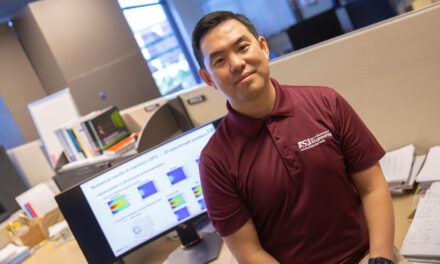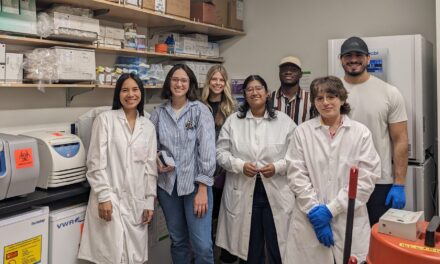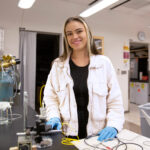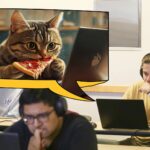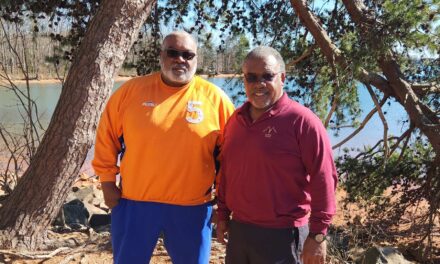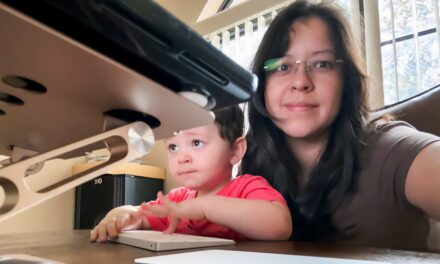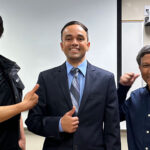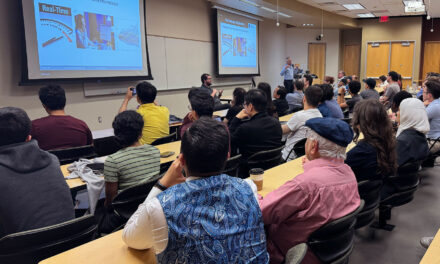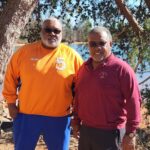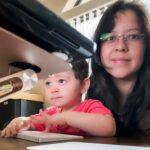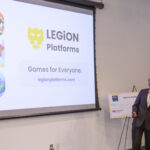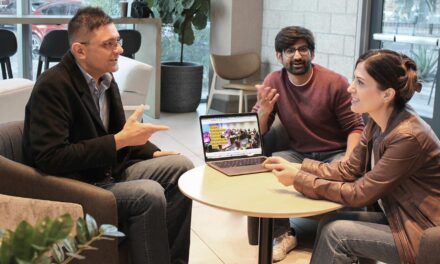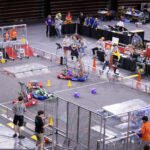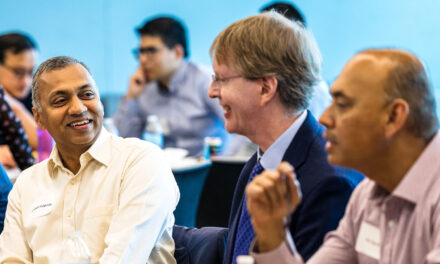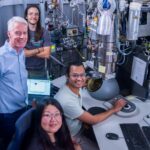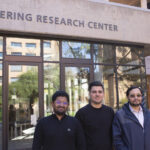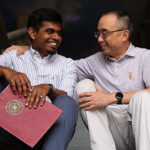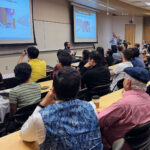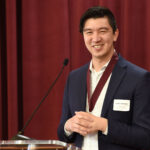
Students’ fresh perspectives lead ASU researcher to success

Huan Liu has built a renowned research career in the areas of social computing, data mining and artificial intelligence by letting his doctoral students lead the way.
“I think young people are more active, more creative,” says Liu, a professor of computer science and engineering in Arizona State University’s Ira A. Fulton Schools of Engineering. “But I can help them with my experience.”
As an AI researcher, Liu’s expertise focuses on discovering actionable patterns or insights from data, particularly social media data — a challenging type of information to work with.
His work attracts high-achieving students because, as users of social media, they know which problems they can solve, including tackling online issues like fake news, cyberbullying, data privacy, thwarting malicious users and many more.
Together, Liu and his students are connecting the dots in social media data and making strides in improving our digital lives in a number of ways via AI.
From two to many
Liu takes an unconventional approach to working with doctoral students. When they join the School of Computing, Informatics, and Decision Systems Engineering, one of the six Fulton Schools, students choose from two general starting points for their doctoral research: feature selection for data mining or social computing.
From there, it’s up to each student to come up with a particular focus and make it their own. Whatever they end up with, Liu lets students take their projects with them into high-achieving careers in academia and industry while he starts all over again on a different focus with each new doctoral student.
Through this dynamic approach, Liu is building an influential and diverse body of research in these two areas.
Improving life online with feature selection and social computing
While the general public may view social media as a massive data source, Liu and his students use the concept of feature selection to make social media data even bigger and take advantage of unique characteristics of social media to make thin data thicker.
Feature selection sounds like narrowing the amount of data a researcher uses, but it is really about bringing out salient features that might be hidden in a data set. This means researchers have even more data to work with, and it’s data that is especially useful. It’s an effective tool in a data mining researcher’s toolbox, and one Liu has been studying for more than 20 years.
The latest feature selection effort Liu is working on is led by doctoral student Jundong Li. The research has resulted in a widely used open source repository, scikit-feature, and an influential article on feature selection algorithms and datasets. Li’s work has been featured on leading machine learning website KDnuggets as a must-see project.
“Regardless of how powerful machine learning algorithms are, we still need to get the data ready for learning,” Liu says.
For example, Liu’s former doctoral student Reza Zafarani, now an assistant professor at Syracuse University, collects minimal user information from multiple accounts to determine if accounts on different social media platforms are controlled by the same person. This practice can help identify malicious actors online.
Social computing with machine learning can also help to find the sweet spot between utility and privacy online without requiring users to compromise — something that doctoral candidate Ghazaleh Beigi is working on.
Currently, sharing more data online increases privacy and security risks. If we limit what we share, we would miss out on valuable opportunities to obtain targeted services, for instance, which can alleviate information overload. Beigi’s research demonstrates that a noncompromising approach to user privacy and utility is achievable.
Since 2007, Liu has also been involved in social computing research, an interdisciplinary field that is a natural extension of his research in data mining. By studying the intersection of user behavior on technical systems, researchers can gain new insights and provide new capabilities to design computer systems that support humans’ social behavior and interactions.
Liu’s students have leveraged social computing research to address a variety of challenges of life online.
Former doctoral student Pritam Gundecha, now with IBM Almaden Research Labs, conducts work that estimates whether a user online is vulnerable to privacy breaches. Doctoral candidate Liang Wu focuses on misinformation diffusion and detection.
Current graduate students Kai Shu, Lu Cheng and Kaize Ding have their own lines of research. Cheng aims to detect cyberbullying on social media. Shu studies automated fake news detection on social media guided by social science theories in collaboration with ASU Professor H. Russell Bernard. Ding investigates outlier detection in social media analysis.
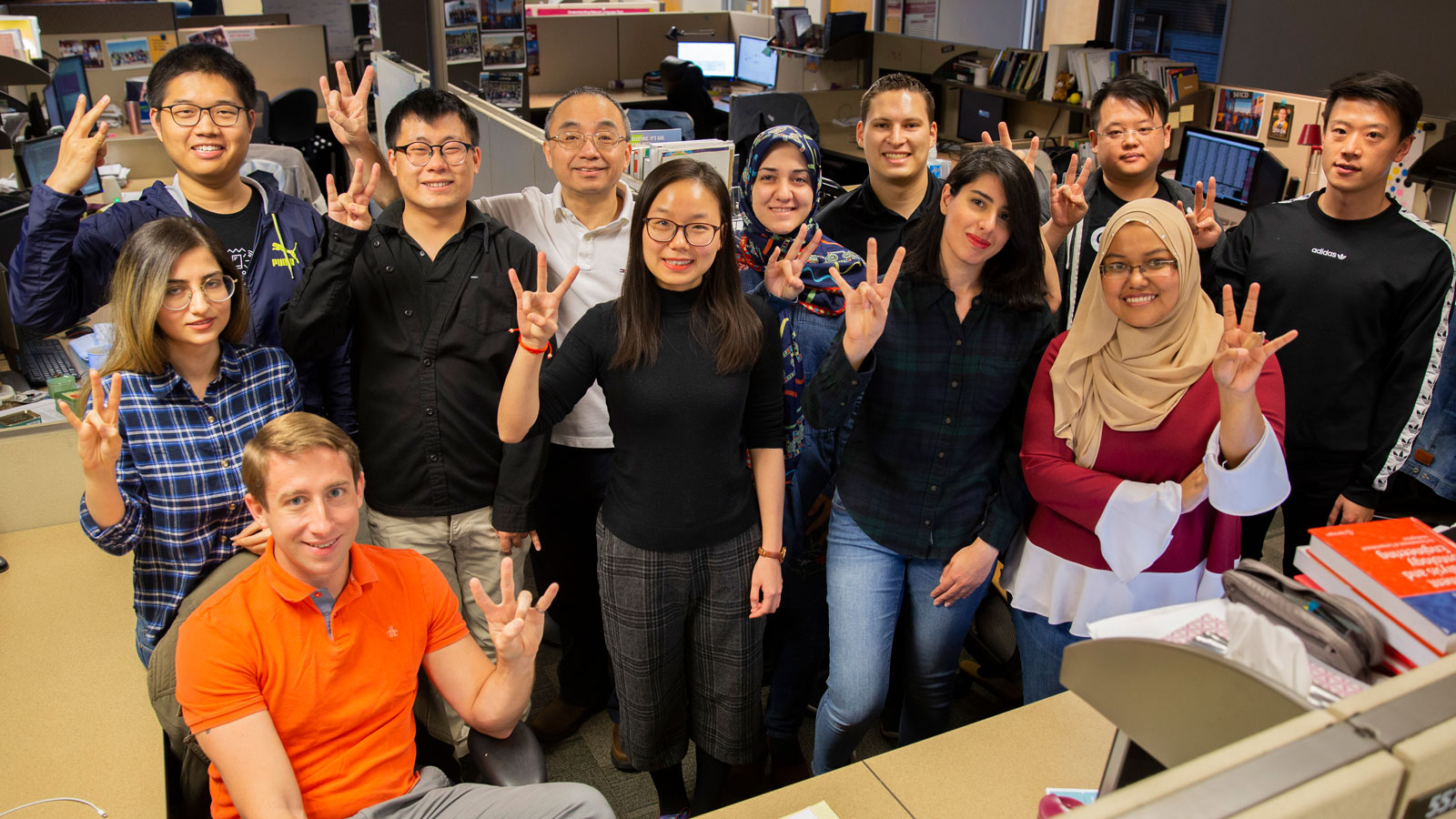
Students at all levels are producing valuable research in Huan Liu’s Data Mining and Machine Learning Lab. Huan Liu poses with some of the many doctoral and graduate students on his lab team. Pictured: (seated) Isaac Jones (from left to right) Raha Moraffah, Kai Shu, Ruocheng Guo, Huan Liu, Lu Cheng, Tahora Nazer, Matthew Davis, Ghazaleh Beigi, Liang Wu, Nur Shazwani Kamarudin and Kaize Ding. Photographer: Erika Gronek/ASU
Fostering academic leaders
Liu’s students’ work has gained recognition at ASU and beyond.
Two of his students have earned Dean’s Dissertation Awards, including Suhang Wang in fall 2018. Wang, now an assistant professor at Penn State, earned the award for his work exploring social media network representation learning.
In 2014, TweetTracker, a web-based system that collects and visualizes social media data for humanitarian assistance and disaster relief earned the ASU President’s Team Award for Innovation. The project originated with two former doctoral students: Shamanth Kumar, who now works at Twitter, and Fred Morstatter, who works at the University of Southern California Information Sciences Institute.
In the wider research communities for social computing and feature selection, Liu’s students often are leaders in their field before they’ve even earned their doctorate; many have citation stats that rival those of some established faculty members. A high number of citations is one way to indicate their work is influential in their research community.
“My senior doctoral students are actually postdocs in the lab,” Liu says. “They guide junior members and help them to succeed, and in the process, they naturally become leaders through their hard work. They can take on challenges to go straight to faculty positions, research labs and coveted companies. I’m proud of them and they do ASU proud.”
Through the work with his doctoral students, Liu has one U.S. patent and has filed more than two dozen patent disclosures.
The Data Mining and Machine Learning Lab also hosts many undergraduate students who are working on their honor’s theses and research projects through the Fulton Undergraduate Research Initiative. That would not be possible without senior members of the lab taking on leadership roles in guiding and helping undergraduates. Liu says doctoral candidate Tahora Nazer is one of the latest outstanding strong research mentors among many former and current members of the lab team.
Gaining recognition in his community
The body of work Liu developed with these exceptional students recently earned recognition from three prominent professional organizations.
In the last few months of 2018, Liu was named a Fellow of the Association for Computing Machinery (ACM), the Association for the Advancement of Artificial Intelligence (AAAI) and the American Association for the Advancement of Science (AAAS). He is already a Fellow of the Institute of Electrical and Electronic Engineers (IEEE).
Election as a Fellow recognizes the researcher’s significant and influential contributions to important topics in the bestowing organization’s field.
“It’s a very pleasant surprise to get all three in the same year,” Liu says. “To get this kind of recognition is a reinforcement of our pursuit of excellence. It will help us reach a wider audience and also encourages us to be more creative and diligent.”
Within the Fulton Schools, Liu is on the faculty of the School of Computing, Informatics, and Decision Systems Engineering. He says the school’s leaders have always encouraged him to aim high in the goals for his research.
Liu also credits the environment of the School of Computing, Informatics, and Decision Systems Engineering, the Fulton Schools and ASU, which is enabling him to teach, collaborate and innovate with inspiring colleagues and excellent students who are motivated by high aspirations.


